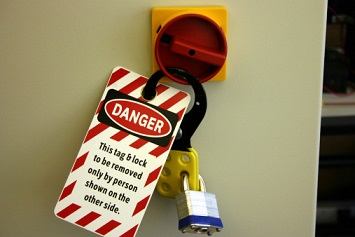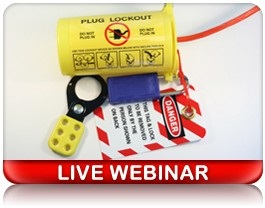Does your safety program effectively protect workers when they are exposed to moving machine parts and hazardous energy? The machine guarding and lockout/tagout (LOTO) standards are consistently on the list of the top 10 most frequently cited OSHA standards—read on for a Q&A on the basics, as well as an opportunity to join our live webinar on the subject.

braclark / iStock / Getty Images Plus / Getty images
According to OSHA, workers who operate and maintain machinery suffer 18,000 amputations, lacerations, crushing injuries, abrasions, and over 800 deaths per year because of unguarded (or poorly safeguarded) machines and equipment. Your company may be subject to multiple OSHA citations if workers are exposed to these hazards during service and maintenance operations without adequate machine safeguards and LOTO procedures.
Identifying the particular risks that can be addressed by a comprehensive LOTO and machine guarding program will require a careful assessment. Knowing the risks will help in determining, case by case, what would be the most effective strategies and programs. To start off this assessment, we have a brief Q&A with Tracy Moon, an attorney with Fisher Phillips LLP and an expert in employment law—to learn more, be sure to join his live webinar, Machine Guarding and Lockout/Tagout: Simplify and Implement Your OSHA Compliant Program and Procedures, on Thursday, November 1!
Q: What is the purpose of LOTO?
A: The purpose of lockout/tagout, or LOTO for short, is to prevent the unexpected energization of equipment or machines and to protect workers from hazardous energy.

Join our live webinar on November 1, 2018, for more information on keeping your organization’s LOTO and machine guarding procedures compliant!
Q: What are examples of some of the types of energy that must be considered when developing a LOTO procedure?
A: When developing a LOTO procedure, there are many types of hazardous energy that must be considered, and there can be multiple types and sources present in your facility depending on your industry. These types of energy include electrical, mechanical, hydraulic, pneumatic, chemical, and thermal.
Q: What should be covered in an equipment-specific LOTO procedure?
A: For an equipment-specific LOTO procedure, you should be sure to cover:
- Proper notification of employees and preparation for shutdown;
- Machine or equipment shutdown;
- Machine or equipment isolation;
- Lockout/tagout device application;
- Verification of isolation; and
- Release from lockout/tagout.
Q: What must an energy control plan include?
A: A good energy control plan must include three things:
- A written program that includes specific written procedures;
- Training of employees appropriate to their roles (authorized, affected, etc.); and
- A periodic review and evaluation of the program and procedures.
 Tracy Moon is a partner in Fisher Phillips’ Atlanta office, where he has represented organizations before the National Labor Relations Board (NLRB) and other government agencies, including the Occupational Safety and Health Administration (OSHA). Moon has counseled and trained employers on labor and employment law, including conducting on-site compliance inspections and in-house management training programs. Tracy Moon is a partner in Fisher Phillips’ Atlanta office, where he has represented organizations before the National Labor Relations Board (NLRB) and other government agencies, including the Occupational Safety and Health Administration (OSHA). Moon has counseled and trained employers on labor and employment law, including conducting on-site compliance inspections and in-house management training programs.
Join Moon on November 1, 2018, for his live webinar Machine Guarding and Lockout/Tagout: Simplify and Implement Your OSHA Compliant Program and Procedures, which will give you valuable insight into how to protect your organization from both the financial burdens of LOTO citations and the human cost of serious injuries on the job that result from an inadequate machine guarding program. |
